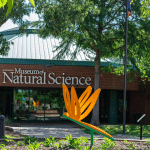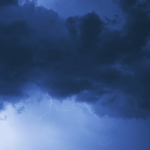A team of researchers and the University of Southern Mississippi are working to understand the scientific effects of the re-opening of the Bonnet Carré Spillway on the Mississippi Sound.
The U.S. Army Corps of Engineers opened the spillway located in St. Charles Parish, La., for the second time in 2019 on May 10 in order to reduce the risk of flooding in southeast Louisiana due to dangerous levels of sustained rainfall in the area. The spillway regulates the flow of water from the Mississippi River into Lake Pontchartrain and eventually the Gulf of Mexico. The flow of freshwater into the Mississippi Sound, which runs east to west along the Gulf Coast, has the potential to significantly impact water quality and marine life, as well as tourism and the Coast’s economy.

“The state of Mississippi has a strong and reliable partner in The University of Southern Mississippi,” Gov. Phil Bryant said. “The work of their research team will be critical in ensuring that our communities and federal government are informed of the adverse effects of the Bonnet Carré Spillway opening. I appreciate the continued collaboration between academia and government as we work to meet the needs of the people of Mississippi.”
USM researchers from its School of Ocean Science and Engineering, located at the Marine Research Center in Gulfport, the Gulf Coast Research Laboratory in Ocean Springs, and the John C. Stennis Space Center in Hancock County, have begun a thorough examination of the spillway’s effects on the Mississippi Sound and will continue their work for as long as the effects are measurable and impactful.
“This work is a priority for The University of Southern Mississippi in the immediate future as USM researchers all along the Gulf Coast continue to pursue advanced understanding of this critical body of water,” said University President Rodney D. Bennett. “I am proud that USM is best positioned to lead this important work, and our efforts will reflect our significant commitment to the Mississippi Gulf Coast, as well as our responsibility to the state as a leader in public higher education and research.”
USM is coordinating research efforts with the Mississippi Department of Marine Resources, the state’s marine resource management, and regulatory agency.
“The University of Southern Mississippi houses a diverse array of scientific expertise suited to explore and understand these types of events with significant coastal impacts,” said Dr. Monty Graham, Director of USM’s School of Ocean Science and Engineering. “Specifically, we’ll be using various technologies and projects to gather data on biological resources such as oysters and crabs, monitor water quality components, use remote sensing and circulation modeling, and survey the impacts to seagrass, artificial reefs, and channels.”
The University’s findings will be made publicly available and will be communicated to state leaders and the general public.
“South Mississippi’s greatest resource is our Gulf, and we owe it to the people and ecosystem whose lives are directly impacted by the opening of the spillway to be transparent in our findings,” said Dr. Read Hendon, Associate Director for the School of Ocean Science and Engineering’s Gulf Coast Research Laboratory.







